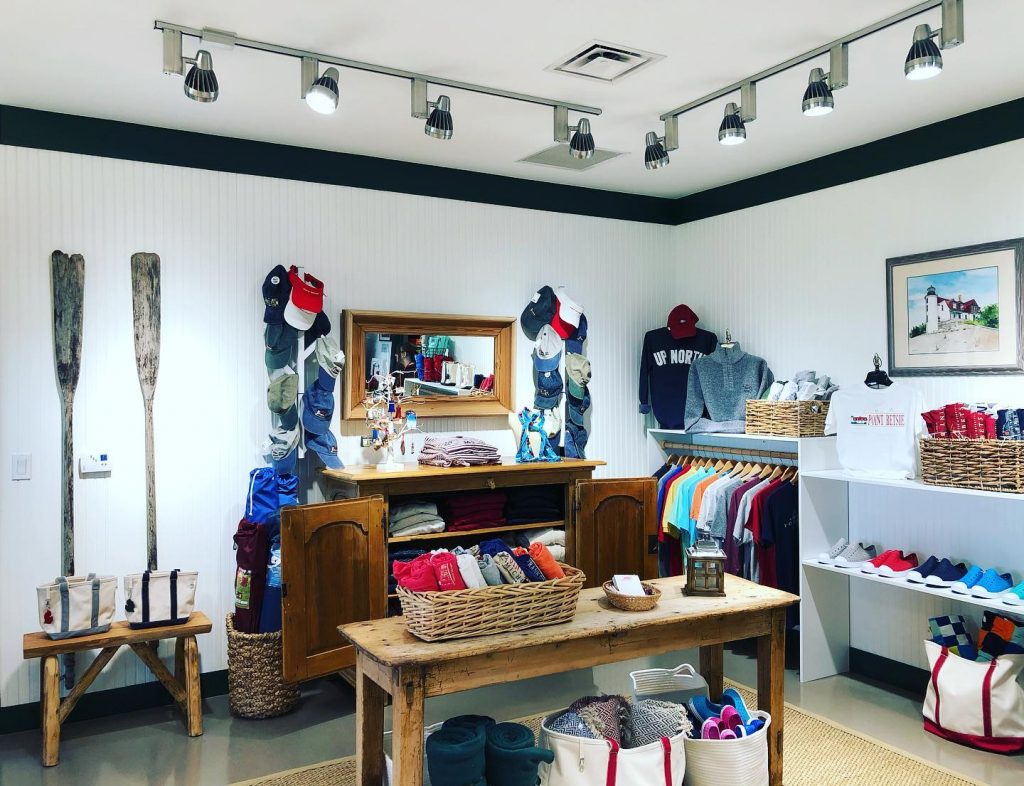
YOUR PURCHASE SUPPORTS PROGRAMS & PRESERVATION
The Point Betsie Lighthouse Gift Shop is your source for Point Betsie gifts, apparel, toys, and decorative items. Your purchase supports the restoration and preservation of Point Betsie Lighthouse.

The Point Betsie Lighthouse Gift Shop is your source for Point Betsie gifts, apparel, toys, and decorative items. Your purchase supports the restoration and preservation of Point Betsie Lighthouse.
The light house will begin operations on May 18, 2024. Open Thursday – Monday 10-5. See the complete schedule at: https://pointbetsie.org/tours.
State of Michigan grants $5.1million Point Betsie Lighthouse for repairs to the crumbling Shoreline Protection System. Read more at https://pointbetsie.org/latest-developments.

The dunes at Pt. Betsie are part of the largest freshwater dune system in the world, which covers 275,000 acres of Lake Michigan shoreline. The Pt. Betsie dunes provide critical habitat for rare species, including Pitcher’s thistle. They have also been identified as a potential nesting site for piping plover as the population of this endangered species recovers. The Nature Conservancy works with partners through the Michigan Dune Alliance to conserve this rare coastal ecosystem.
Point Betsie is a dynamic mosaic of shifting sand dunes, wetlands, boreal forest and sandy Lake Michigan beaches constantly battered by wind, ice, waves and currents moving along the shore of the lake. This globally imperiled open dune habitat provides a place where threatened species such as Pitcher’s thistle, fascicled broomrape and the Lake Huron locust can thrive.
Dune vegetation includes marram grass, beach pea and hoary puccoon with forested islands of balsam fir, paper birch, red oak and creeping juniper. Peaceful ponds among the dunes swell and shrink in sync with water levels in Lake Michigan, attracting migrating birds such as the semipalmated plover. Cedar waxwings flit through pockets of forest while spotted sandpiper and killdeer scurry over the sand.
Read more at the Nature Conservancy website: https://www.nature.org/en-us/get-involved/how-to-help/places-we-protect/zetterberg-preserve-at-point-betsie/?tab_q=tab_container-tab_element
These are private homes. What a wonderful place to live. Please respect.
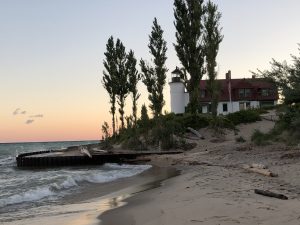
The beach at the Point Betsie Lighthouse has been a gathering place since people started to come to the area. The beach is “world class” with beautiful sand, rolling waves, and activities (e.g., watching the sunset, beach fires, throwing stones in the lake). The beach is open to the public with ample parking. To help you arrive in time for the sunset, notice the sunset countdown timer on the right side of this page.
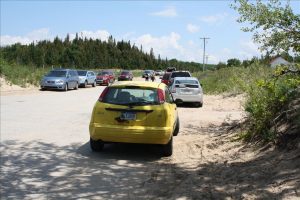
There is ample parking at the end of the road leading into Point Betsie Lighthouse. Parking is free. During some popular summer times, the line of cars can stretch up the road, but there is always space left for more visitors.
Point Betsie’s first light began guiding and warning ships in 1858. The lightkeepers, a.k.a. “wickies,” lived at Point Betsie, and for most of their time they fired the kerosene lamps by hand. It was only in 1921 that the station hooked up to the electric grid and an electric bulb was installed in the lens. With automation came a reduced need for lightkeepers altogether, and the last keeper retired from Point Betsie Lighthouse in 1963, although it wasn’t completely automated until 1984. The US Coast Guard oversees the operation of the current, automated light at Point Betsie today. Thanks to technology, it doesn’t require an “in-person” keeper but continues to shine its familiar beacon of light.
By JULIE CASE on September 9, 2019
My North.com
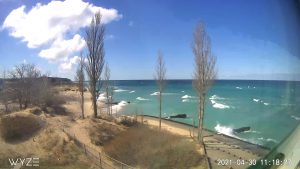
Lake Michigan is the second largest of the Great Lakes by volume and third largest by area. Its strong winds and shifting bottom caused countless shipwrecks in this area. The U.S. government built a lighthouse at Point Betsie which began operation in 1858, before the Civil War. The lighthouse marked the south entrance to the heavily traveled Manitou Passage and was like other lighthouses, manned by one keeper and his family. It was a lonely, but important job. You can find more interesting facts about the lighthouse in the history section of this website.

Fog Signal Building is where the distinctive wail and sound pattern of the fog horn would tell sailors where they were, not just how close to shore.
Fog signals have received much attention at Point Betsie. In the autumn of 1912, the fog signal building was rebuilt. The 10-inch (250 mm) locomotive whistles were replaced by 10 inch chime whistles. In 1921, upon being connected to the electrical power grid, a 110-volt electric bulb was installed, and the fog signal upgraded to twin Type “G” diaphones, driven by electric air compressors. The diaphone doubled the audible radius, and had the added benefit that it could be brought on line immediately, without waiting for steam engines to build pressure. The following April the fog signal’s characteristic was changed to a group of two blasts every 30 seconds.
Unfortunately, the Point Betsie Lighthouse’s warning light wasn’t enough to prevent many of the area’s shipwrecks so a life-saving station was opened at Point Betsie in 1877 to rescue shipwrecked victims. A fog signal was installed and manned in 1891 to warn ships of the close shoreline. The lighthouse was no longer the only building on Point Betsie. This also meant the keeper and his family were no longer alone. There were more brave people working there to keep ships, crews and passengers safe. Exciting stories of these important services are told at our lighthouse and museum.”

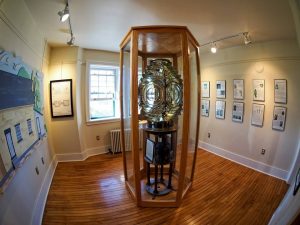
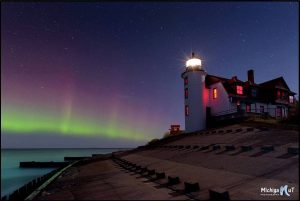
Point Betsie Lighthouse is located on the beautiful Lake Michigan shoreline south of the Sleeping Bear Dunes and north of Frankfort, Michigan. The original 1858 lighthouse, keeper’s residence, fog signal building, and Boathouse Museum are open to the public. Our gift shop carries gifts, apparel, toys, and decorative items to help you remember your trip to the Point Betsie Lighthouse.
The name Point Betsie originates from the Native American people who were in the area and communicating with the French at the time. The French “Pointe Aux Bec Scies” comes from the Indigenous word “Ug-Zig-A-Zee-Bee” which People of the Three Fires [Tribal] Council gave to a river flowing into Lake Michigan just a few miles to the south, where sawbill or Merganser ducks thrived. Translated, Point Betsie means Saw Beak Point. [1] Construction of Point Betsie began in 1854 and was completed in 1858, with service beginning in the shipping season of 1859. The lighthouse was constructed at a cost of $5,000. The light was the site of one of the earliest Life-Saving Stations, built in 1875. The cost of the Life Saving Station was $3,000. [2] Point Betsie was built with Cream City Brick and the plans called for a light 37 feet in height from the foundation to the top of the ventilator ball. Placement of the structure, on the dunes, exacted the lighthouse at a focal plane of 52 feet above lake level. Five concentric brick rings encircling the tower beneath the lantern, each successively larger in diameter than the lower ring, formed a support for the gallery on which a decagonal cast iron lantern was installed. In 1900, due to a critical need for a day marker, the Point Betsie tower and dwelling were painted white, and the roof and parapet were painted red. Point Betsie was the last lighthouse on Lake Michigan to be completely automated; a white, Vega VRB-25 was installed in 1983. Before automation, the lantern room was fitted with a Fourth Order Fresnel (pronounced fruh-nel) Lens. The “wickies” operated this light for 106 years. [3].
“In 2010, this site received The Governor’s Award for Historic Preservation. Today, with 300 members strong, The Friends of Point Betsie Lighthouse continue to preserve the site, and educate the public about Point Betsie Lighthouse. Dedicated volunteers and caring individuals serve as museum guides to the delight of guests who will often hear stories steeped in history and lore. To many, Point Betsie is arguably one of the finest of all historical lighthouse sites in the Great Lakes region.
Point Betsie is listed on the National Register of Historic Places, Reference #84001375.
We welcome you to Point Betsie Lighthouse! Come visit us for a tour or to spend some time on our beautiful beach. Inside the lighthouse you will find interesting exhibits telling the history of Point Betsie along with examples of the living conditions that the lighthouse keepers experienced. Experience an exhilarating view from the top of the lighthouse tower. It is only 34 steps up a spiral staircase. You will enjoy stories told by an knowledgeable docent.

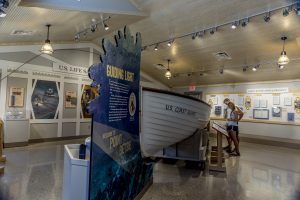
The Boathouse was most recently renovated in 2014 to provide a space for our Gift Shop (updated in 2021), public restrooms, and a free exhibit on our Life Saving Station. The Boathouse is open during our hours of operation. Tour tickets for the Light Station can purchased inside the Gift Shop. Your purchase supports Point Betsie Lighthouse preservation.
Serve refreshments to our ticket holders and engage guests in conversation about their experience. Volunteers will be located in our Fog Signal building. A space heater is provided, but it is recommended to dress warmly depending on the weather. There are two volunteer slots open for guides each night.
Lead ghost enthusiasts through our lighthouse and tell them 7 haunted tales of lighthouses along Michigan’s western shore. Significant memorization is required as well as an interest in storytelling and performance. Training for the event will be conducted the week prior to the event start. There are two volunteer slots open for guides each night.
Weeds tend to flourish at the lighthouse and require a weekly upkeep to keep our grounds looking their best. Garden tools and gloves are provided.
shifts (9-11) Saturday only
Various plants and planters on the grounds of Point Betsie Lighthouse need to be watered each morning. These volunteers will need to be able to navigate our grounds while carrying a provided water can that can weigh up to 15lbs due to limited water hose access.
shifts (9-10) except Sunday (11-12)
This Docent is on hand to answer any questions in the Boathouse Exhibit. This Docent ensures that each guest has an opportunity to experience any interactive displays. This is a position with only limited movement required.
shifts (10-12), (12-2), (2-4) except Sunday (12-2), (2-4)
This volunteer position assists the Boathouse Giftshop at Point Betsie Lighthouse with their daily operations. This could include guest interaction, retrieving items from the back room for guests, stocking low inventory, overseeing the cash register and transactions, and trips to the lighthouse basement and sheds to bring inventory to the boathouse. Seated positions are available.
shifts (10-12), (12-2), (2-4) except Sunday (12-2), (2-4)
This volunteer will read a lighthouse centered story to children and lead them in an activity. Suggested books and activities are provided, but we remain open to other ideas that the volunteer may have within reason. These activities should be coordinated at least 3 weeks in advance with the Executive Director. This position has limited movement required.
shifts (10:30-12) Saturday only
This Docent will be in the Fog Signal Building and answer questions about the new SPS display and ongoing construction process. These Docents will be briefed with any new updates before their shift so that they have up to date information on the constantly evolving process. This Docent will be on hand to ensure that each guest gets an opportunity to participate with interactive displays and is made aware of how to donate to The Friends of Point Betsie Lighthouse. This position has limited movement required.
shifts (10-12), (12-2), (2-4) except Saturday and Sunday (12-2), (2-4)
This Docent will lead guided tours through the lighthouse. This position requires significant movement through the lighthouse as well as a deep knowledge of the history. A script outline is provided for the tour, but each guide is allowed to make the tour their own and respond to guest questions and points of interest on each tour.
shifts (10-12), (12-2), (2-4) except Sunday (12-2), (2-4)
This Docent ensures the organized flow of guests for each tour. They will instruct guests to wait on the porch until their tour time as well as direct guests without tickets to Gift Shop to purchase. Guests will often ask this position for the location of restrooms. This Docent will also ring the bell at the base of the tower once a group’s time is up at the top of the tower. They will also supply guests with scavenger hunt and activity materials as well as answer guest questions. This position has limited movement required.
shifts (10-12), (12-2), (2-4) except Sunday (12-2), (2-4)
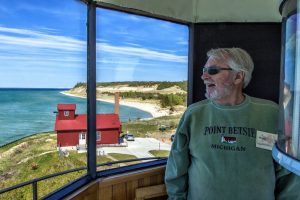
The Tower Docent interacts with guests at the top of the tower and ensures the safekeeping of the lens and organized flow of visitors. The Tower Docent will point out areas of geographical and historical significance from the tower view. Guests often ask the Tower Docent to take photos of their group. The Tower Docent should be able to answer guest questions to the best of their ability and enhance the guest experience at Point Betsie Lighthouse. This is a seated position, but does require a trip up and down the tower stairs.
shifts (10-12), (12-2), (2-4) except Sunday (12-2), (2-4)
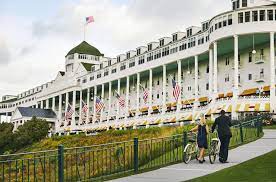
For centuries, visitors have found this national landmark to be the ideal vacation spot. No cars. No chain hotels. Just world-famous Mackinac Island Fudge, historic Fort Mackinac, unique shopping and diverse dining. Unforgettable sunsets, awe-inspiring sunrises and extraordinary nightlife befit our ranking as a Top 10 U.S. Island by TripAdvisor and USA Today. Start planning your trip to Mackinac Island…the Jewel of the Great Lakes.
Learn more at: https://www.mackinacisland.org/

It’s where the great outdoors calls your name and invites you to find seasonal adventures. Where winter sports come alive with a fresh blanket of snow and where it’s easy to find a cozy spot to sip local libations. No matter how you choose to explore, you know you’ll be in a pretty great place.
Learn more at: Traverse City
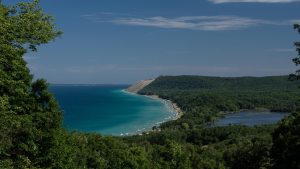
Sleeping Bear Dunes is as old as continental ice sheets and as young as the 1970 Establishment Act that set aside the Lakeshore for preservation of the natural resources and for public use. The most prominent features, and those for which the park is named, are the perched dunes above Lake Michigan. These immense sand dunes are “perched” atop the already towering headlands that are glacial moraines. The dune overlooks at the Sleeping Bear, Empire and Pyramid Point bluffs are about 400 feet above Lake Michigan. With 65 miles of Lake Michigan shoreline and numerous inland lakes and streams, the park is wonderfully water oriented.
Although the Lakeshore is long and narrow, it still has the depth for excellent representations of several northern hardwood and conifer forest types, abandoned farm site meadows, wetlands, lakes, streams, and bogs and splendid examples of glacially caused landforms. Whether you are on the sandy bluffs overlooking Lake Michigan, in a canoe on one of the many inland lakes, hiking the myriad of trails through the forest, or visiting the Manitou Islands in Lake Michigan you will have a wonderful opportunity for bird watching, wildlife viewing, and for just enjoying nature at its best. We hope the following nature pages will give you a quick insight into all that can be seen during your visit to the “little finger” area of the Michigan mitt.
Learn more at: https://www.nps.gov/slbe/index.htm

This is the location of the Point Betsie Lighthouse.

Crystal Downs was designed by Dr. Alister MacKenzie at the peak of his career, following his design of Cypress Point and prior to the creation of Augusta National.
Crystal Downs remains unaltered from its original design and represents one of the finest examples in the world of Dr. MacKenzie’s work.
Crystal Downs appears in every golf design critic’s listing of top courses in the world. It has been ranked as high as #14 in Golf Magazine’s Top 100 Courses in the World and #11 in Golf Digest’s Top 100 U.S. Courses. The par four 5th hole and the par five 8th hole are frequently cited as two of the greatest golf holes in the world.
Learn more at: crystaldowns.org
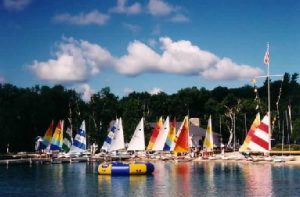
The Crystal Lake Yacht Club is a summer sailing club of about 300 member families, located on the west shore of Crystal Lake in Benzie County, Michigan.
Our primary goals are to sponsor competitive sailing among members of all ages, and to encourage safe and fun boating on Crystal Lake. Our Junior Fleet is the nucleus of our club’s activities, and it provides education, competition, and camaraderie for youngsters through the age of 16. We typically hold sailboat races five or six days per week, starting in the middle of June and ending in the middle of August — between school’s out and school’s in. Since the CLYC is located in “Scow Country,” our primary fleets consist of E-Scows, MC-Scows, Melges-17s, and Butterflies.
Learn more at clyc.net
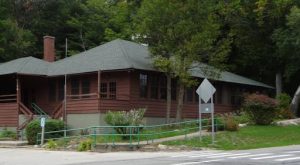
The Congregational Summer Assembly was founded over 100 years ago as a Congregational Church Summer Camp for ministers and laymen. While the CSA is no longer directly affiliated with the Congregational Church, it remains a community where generations of families have grown up enjoying the same kinds of summer pleasures from 100 years ago… picnics, sports, the beach, and family-oriented activities.
The purpose of the CSA continues to be to promote the physical, intellectual, moral and spiritual welfare of its members – these are for the most part families who own cottages on and around the CSA grounds. A focal point of the CSA is the Meeting House where there are many church related activities – choir, Sunday services led by guest ministers from throughout the country, Bible study classes, and many others. It is also where a multitude of musical activities take place: Adult and children’s operettas showcase great amateur talent and professional musicians, from pianists to opera singers, also regularly perform in the Meeting House.
Learn more about the CSA at: https://summerassembly.org/
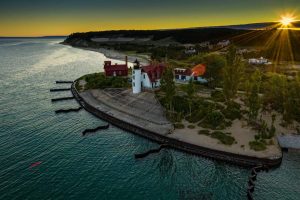
The worry about the dangers to Point Bestie from times of high water in Lake Michigan is not new. In the late 19th century, the lighthouse keeper began sending letters warning government officials that the erosion caused by the high water levels was endangering the safety of the lighthouse. If the high water situation continued, he told them, it might become necessary to move the lighthouse further from the shore. Fortunately, the water levels of Lake Michigan dropped and Point Betsie Lighthouse was safe but Lake Michigan’s water levels continued to be monitored.
In 1947 a cement collar with metal ribs was installed to protect the lighthouse from high water damage. 2019 and 2020, again, brought record high water levels and it is time to repair and update those structures. See our donation button if you would like to help with our shoreline protection system and keep our lighthouse safe for future generations to enjoy.
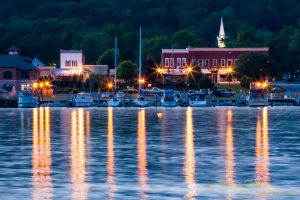
Frankfort stands on the shores of Lake Michigan. The pristine dunes, beaches, and spectacular sunsets awe visitors and locals alike. Victorian homes dominate the picturesque, maple-lined streets and shoppers find unique items crafted in Frankfort’s specialty shops and galleries.
